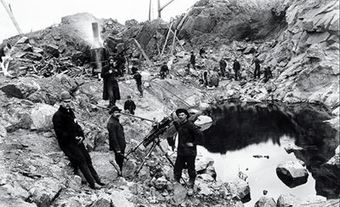Talc
Talc is a mineral composed of 31.7% magnesium oxide (MgO), 63.5% silicon dioxide (SiO2) and 4.8% water. It is formed by the alteration of dolomite or ultramafic igneous rocks. A formula for pure talc would look like this: 3 dolomite + 4 quartz + 1 water = 1 talc + 3 calcite + 3 CO2. Talc is white, greenish or grey and can be translucent or opaque; it feels greasy and is very soft. It is corrosion- and weather-resistant and has low electrical conductivity. It can be ground and micronized into a white powder that is used as a functional filler in plastics, paints, paper, rubber, roofing, pharmaceuticals and cosmetics. Since it has high oil- and grease-absorption capabilities, it is used as a pitch control in pulp and as a coater in paper. In roofing products, talc acts as a fire retardant and increases weather resistance. In ceramics, talc's high fusion point and fluxing action allow lower firing temperatures and quicker firing time; it is also used in glazes because of its low shrinkage rate. A relatively new use is in water clarification, where finely ground talc increases the sedimentation rate of fine particles. Talc is a constituent of soapstone, which is used in sculptures.
There are 3 talc mines in Canada, 1 in Québec and 2 in Ontario. Canada's annual production is about 80 000 t.

 Share on Facebook
Share on Facebook Share on X
Share on X Share by Email
Share by Email Share on Google Classroom
Share on Google Classroom

